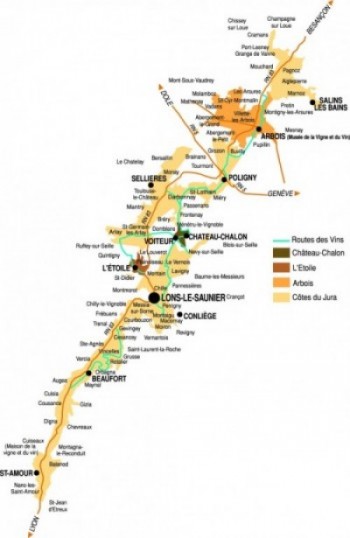

O.I.V. definition (Inter organisation of the vineyards and wines): “the vitivinicol terroir is a concept which refers to an area on which will be developed a collective savoir-faire, with interactions in between a physical space and a biological one, easily identifiable and where long-term practises of wine-making are used; this confers certain distinctive characteristics to all products generated by the region.”
A wine terroir is a group of agricultural plots of land. These parcels of land must be situated in the same region, must correspond to the same type of soil from a geological and orographic point of view and the same wine-growing methods must be used and correctly applied. These conditions, which altogether reflects the regional terroir, if assembled will contribute to give a unique and typical character first to the grapes and then later to the wine itself.
The specificity of the soil depends on local conditions such as the topography (hill slopes and sunny exposition) and a certain proximity to water (rivers or lakes) which will help create a micro climate. The respect of these conditions as well as the choice of the good variety of plant will result in a wine of excellent quality. Variations of the climate can have enormous consequences on the wine. Good or excellent vintages depends very much on these conditions.
Together with these physical conditions (geology, pedology) the role of the wine-maker himself will be dominant on the soil. In effect, the quality of the soil also results from a well-applied savoir-faire with technical requirements elaborated in the AOC chart.
The Jura vineyards in the Franche-Comté region is one of the oldest of France.
It is also one of the smallest French viticulture regions with a volume of less than 1% in wine production vs national production.
This region of 80 km vineyards extends from St Amour in the south to Salins-Les-Bains in the north (see map).
The Jura vineyards of about 1800 ha are composed of different types of soil. The partly continental climate with strong and rude winters and hot and dry autumns, will ensure a good maturing of the grapes. The hill slopes have a south to south west exposition. The altitude is between 250 to 480 meters with slopes of 10 to 40 %.
The subsoil is generally composed of Lias, Trias and bajocien clays with sediments dating from 150 million years, with strong iron contents, perfect for the Savagnin variety.
The Chardonnay and Pinot Noir are two varieties which can grow everywhere. The Poulsard needs red or blue clays in order to grow. The Trousseau, a late variety will prosper on a more filtering and well exposed sedimentary soil. The Savagnin will flourish on a blue calcareous clay.